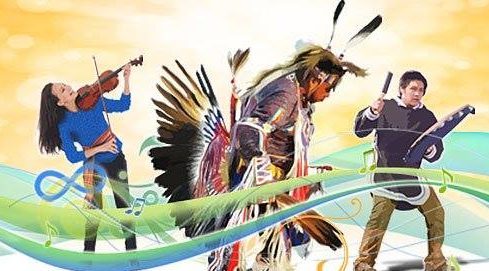National Aboriginal Day officially takes place on June 21 and was first proclaimed in 1996 by the federal government.
This year marks the 21st annual National Aboriginal Day, a cross-country event honouring the rich and diverse history, culture and contributions of First Nations, Métis and Inuit peoples.
“National Aboriginal Day gives all Albertans and Canadians the chance to connect with and explore Indigenous culture and history, and to appreciate its diversity, complexity and beauty. Events such as this provide an excellent opportunity to learn more about Indigenous cultures as we move forward towards reconciliation,” said Richard Feehan, minister of Indigenous relations.
Alberta is home to more than 220,000 Indigenous peoples and has the largest Métis population in Canada and is the only province with a recognized Métis land base – the eight Métis Settlements.
The Regional Municipality of Wood Buffalo is part of Treaty 8 Territory.
To view the various nations throughout Alberta click here.
Celebrations in Fort McMurray
Fort McMurray plans on honouring the day in a spirit og reconciliation while promoting the education on the history of the Country’s Indigenous people.
Melissa Herman is from Treaty 8 Territory and is a Northern Fellow with ABSI Connect and is the committee chair of National Aboriginal Day in Fort McMurray.
“Our theme is reconciliation this year and that mostly comes from it being Canada 150 on July 1,” said Herman, “With the theme being reconciliation we are inviting people, especially non-indigenous people to come out and really celebrate our culture and enjoy what it has to offer and actually learn more about the history of this country in light of reconciliation and Canada 150.”
It’s the chance for non-indigenous people to take part in cultural appreciation without the fear of appropriation.
“We are trying to empathize with non-Indigenous people and think, if I wasn’t Indigenous why would I come to national aboriginal day?” Said Herman.
A variety of free events will take place at Snye Point Park from 11 a.m. till 5 p.m. and all people are welcome to participate.
It’s going to be the largest scale celebration since 2012, after the community has faced natural disasters in the past.
During the evacuation last year many of the rural communities opened their doors and this can be a time to thank them and again have non-Indigenous and Indigenous people mix and mingle.
“So many times in Fort McMurray with the Centre of Hope on Franklin Avenue and the Casino right off main street, it’s very easy to perpetuate this image of Indigenous people, but we have something very real,” said Herman, “when you have powerful pow-wow dancers dancing in downtown Fort McMurray people who aren’t usually exposed to Indigenous people can say ‘Wow, this is Indigenous culture.”
Cultural Activities
Entertainment will be provided by Pow Wow Times Performing Arts Troop, with dance explanations between sets so people can learn more about the traditions of dance in the culture.
Kids activities include making a talking sticks to use in storytelling exercises.
There will be a fish fry on site as well as bannock and other snacks and refreshments made by local elders.
“People come for the music and food, we’re hoping they can stay and be a part of a really meaningful and impactful conversation that we can have ongoing throughout the year.”
There will be sitting areas that will promote healthy, organic conversation.
Other activities include a mass blanket exercise, fiddling, jigging, painting and more.
The blanket exercise is an interactive learning experience that teaches the Indigenous rights history that is rarely taught.
Developed in response to the 1996 report of the Royal Commission on Aboriginal Peoples that recommends education on Canadian-Indigenous history as one of the key steps to reconciliation,
Standing on blankets that represent the land, participants will walk through pre-contact, treaty-making, colonization and resistance.
“It’s a really good example of how non-indigenous people can literally put themselves into Indigenous peoples shoes and then see how the land was divided, how the territories were made, how the provinces were developed and really get an understating of how the land went from being Indigenous land to non-indigenous land,” said Herman
Anyone looking to learn more about the Moosehide and Red Dress campaigns can find more information at the event.
Transportation to and from rural communities will be provided by Diversified Transportation.
The event is brought to you by the Nistawoyou Friendship the Regional Municipality of Wood Buffalo, ABSI Connect, the Wood Buffalo Arts Council, the Wood Buffalo Regional Library, and FuseSocial.







